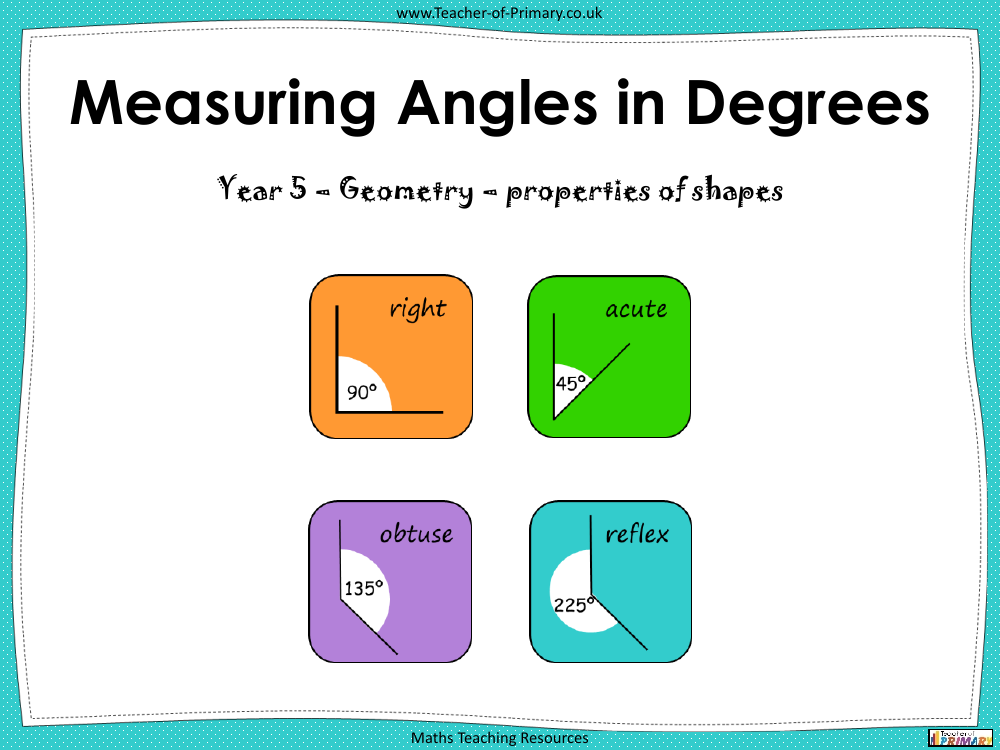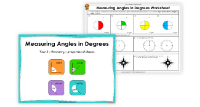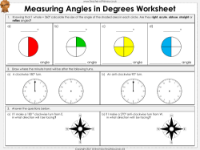Measuring Angles in Degrees - PowerPoint

Maths Resource Description
In a comprehensive lesson on measuring angles in degrees, Year 5 students are introduced to the geometric properties of shapes with a focus on understanding and identifying different types of angles. The lesson revisits acute, obtuse, and right angles, and introduces straight and reflex angles, providing clear definitions and visual examples for each. Students learn to calculate the size of angles in degrees and describe turns using degrees as a unit of measurement. The concept of angles is explained as the measure of turn between two lines, with degrees being the unit used to quantify this turn. A right angle, for instance, measures exactly 90 degrees and is depicted as a corner with a small square symbol indicating its precise nature.
Further exploration into angles includes identifying acute angles, which are smaller than right angles and measure less than 90 degrees, and obtuse angles, which are larger than right angles but smaller than straight line angles, measuring between 90 and 180 degrees. Straight angles are introduced as angles that measure exactly 180 degrees and are found on a straight line, while reflex angles are larger than straight angles, measuring more than 180 degrees but less than 360 degrees. The lesson also delves into practical examples of degrees in real life, such as skateboarding tricks and virtual reality viewing, and teaches students how to use fractions to calculate angles in degrees. Engaging activities, such as determining the direction Rover the dog will face after certain degree turns and classifying angles based on the turn of a minute hand on a clock, help solidify the students' understanding of measuring and describing angles in degrees.


